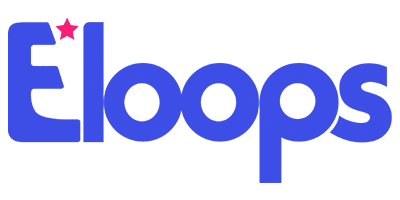How to Go Hybrid for Good
The need to support hybrid work with an employee engagement solution
A study from Harvard Business School indicates that working from the office a mere one or two days per week results in more original work. The researchers propose that this setup is the ‘sweet spot’ of hybrid work – giving employees the flexibility they want and need to be creative without isolating them from teammates in a way that hinders productivity.
But isolation from teammates is not the only downside of remote work. There is also isolation from the company mission, culture, and leadership, a lack of recognition and not knowing who to turn to for help in various areas. While working with teammates in the office once or twice a week may suffice to prevent feeling isolated from them, it’s not enough to avoid these further downsides of remote work.
What else might be needed?
What is the ideal setup for hybrid work?
This question is top of mind for companies trying to establish the right work model in a post-pandemic reality. The pandemic imposed an experiment in primarily remote work on most of us, and companies are now looking at its results for answers. They can refer to many surveys conducted in the past two years of employee and manager thoughts and sentiments about hybrid/remote working. They can also learn from organizations such as Future Forum, which not only conducts quarterly pulse surveys of over 10,000 knowledge workers but also produces playbooks to help decision-makers make hybrid work successful.
While such resources are important, they do not provide scientific data about the actual (and not merely perceived) impact of hybrid/remote work on some of the things companies are most concerned about: employee productivity, work-related communication, and innovation. Absent such data, leaders can maintain hybrid work models are ineffective despite workers’ overwhelming preference for flexibility and partial work from home. The CEO of Goldman Sachs, for instance, has repeatedly insisted that employees return to the office full-time, saying that hybrid/remote work isn’t right for “innovative, collaborative” contexts.

Scientific data suggesting one to two days a week in the office is ideal
A new Harvard Business School study provides rare scientific data about the actual impact of hybrid work setups. It finds a causal link between working in the office one or two days a week and increased originality of work & work-related communication. The study is based on an experiment over nine weeks in the summer of 2020, randomly dividing approximately 100 HR employees into three groups. One group (high WFH) spent less than 25% of the time in the office. Another group (intermediate WFH) spent 25-40% of the time in the office, while a third group (Low WFH) spent more than 40% of the time in the office. An analysis of worker communications from that period reveals that intermediate WFH results in more work-related communications, a 50% increase in unique email recipients, and greater novelty of work products.
In addition, the researchers surveyed the three groups and concluded that those who worked from the office one to two days a week felt greater satisfaction with working from home, greater work-life balance, and lower isolation than their colleagues in the other two groups.
In their discussion of the mechanism behind the results, the researchers propose that intermediate WFH achieves an optimum tradeoff between the flexibility to work where and when one likes on the one hand and connection to colleagues on the other. While remote work offers more flexibility, which has been linked to employees generating creative and original work, it also has been shown to increase isolation from colleagues, which negatively affects work. Intermediate WFH, “might offer the best of both worlds: flexibility without isolation.”

Executives are concerned about the isolation of remote workers
While 80% of employees who can work from home want to do so at least once a week and 30% want to work from home all week, most senior executives worry that remote working disadvantages employees. A recent survey of 200 VC executives at companies with 500+ employees found that 96% of executives believe primarily remote workers are disadvantaged compared to their in-office colleagues. When asked to elaborate on why, 47% of executives cited a lack of access to company leadership, and 43% cited a weaker connection to office culture. Most executives, it seems, believe that primarily remote workers are isolated and that this isolation hampers employee success. It seems unlikely that they would happily institute a model where everyone works remotely most of the time.

What the pandemic taught companies about remote work and isolation
Although fully remote teams managed to collaborate successfully using various digital tools during the pandemic, concerns about the isolation that remote work engenders are legitimate:
- Company culture suffers when employees work from home most of the time. As Fortune CEO Alan Murray writes, “There is little doubt that the so-called Great Resignation is driven in part by employees who feel less bound to their current employer and therefore are more willing to jump at opportunities that offer marginally better pay, career advancement, or alignment with their values. “
- Cross-team cooperation becomes more difficult. People who aren’t already working together simply don’t get a chance to interact, either in person or virtually, which decreases trust and increases awkwardness.
- Similarly, though remote employees may have frequent virtual access to their direct managers, they lack access to company leadership. This lack can reduce engagement, motivation, and retention.
- Onboarding new employees in a remote setup is tricky because it requires interaction with people outside an employee’s direct team. Beyond bureaucratic form-filling and professional training, there’s a human aspect to onboarding: new employees need to get to know those key figures – from IT to HR – who can help them navigate their way at the company and learn about its history and culture.
- Finally, remote setups afford fewer opportunities for recognition (both private and public). This can significantly decrease retention, given that 44% of employees switch jobs because of not getting enough recognition for their efforts.
In other words, primarily remote workers may sense strong ties to their team and yet suffer from a lack of connection to the organization as a whole, its leadership and members of other teams. And this may hurt both the employee and the company in a variety of ways.

Flexibility without isolation
Most employees seek the flexibility to work when and where they choose. If the Harvard Business School researchers are correct, being given this flexibility can result in more original work as long as employees are not isolated from their colleagues. While working with one’s team in the office once or twice a week may prevent isolation from colleagues, it’s neither necessary nor sufficient for those separate connections to the organization, its leadership and other teams. One way for companies to ensure those broader bonds can be built and maintained is to organize things so that not only individual teams but all employees are in the office together at least some of the time. Another way involves finding digital tools that can help build cross-team connections, enhance company culture, and onboard & recognize employees remotely.
Fortunately, there are quite a few digital tools designed to help companies meet these challenges, ranging from platforms focused on one aspect, such as Bonusly and Kazoo, to more comprehensive solutions such as Workvivo, Smarp, and Eloops.

An employee engagement solution to build bonds remotely
Eloops, for instance, is a multichannel communication and engagement solution designed to help companies reach and engage all their employees, no matter where (and when) they work. Its offering includes a vast pre-made content marketplace to help internal communications and HR managers keep employees in the loop and promote their initiatives in an engaging way. It also has a social feed where employees can connect to each other, virtual coins to incentivize and reward interactions, onboarding journeys for new employees, and an employee recognition feature. Companies with remote/distributed employees that use Eloops have seen increased retention due to higher levels of employee engagement and stronger ties to the organization.

Hybrid and happy
Flexibility without isolation. Remote work without missing out on work friendships, mentorship, belonging, and appreciation. This is what hybrid work setups are meant to achieve. It is not clear which hybrid setup is required to achieve this optimum balance, and it may even be that different companies, industries, or departments will require different arrangements. What is clear is that the right employee engagement solution will bring any company closer to the ideal.
If you’d like to see how Eloops’s employee engagement solution can help you engage and communicate with your hybrid workforce, book a personalized demo today.


Leave a Reply